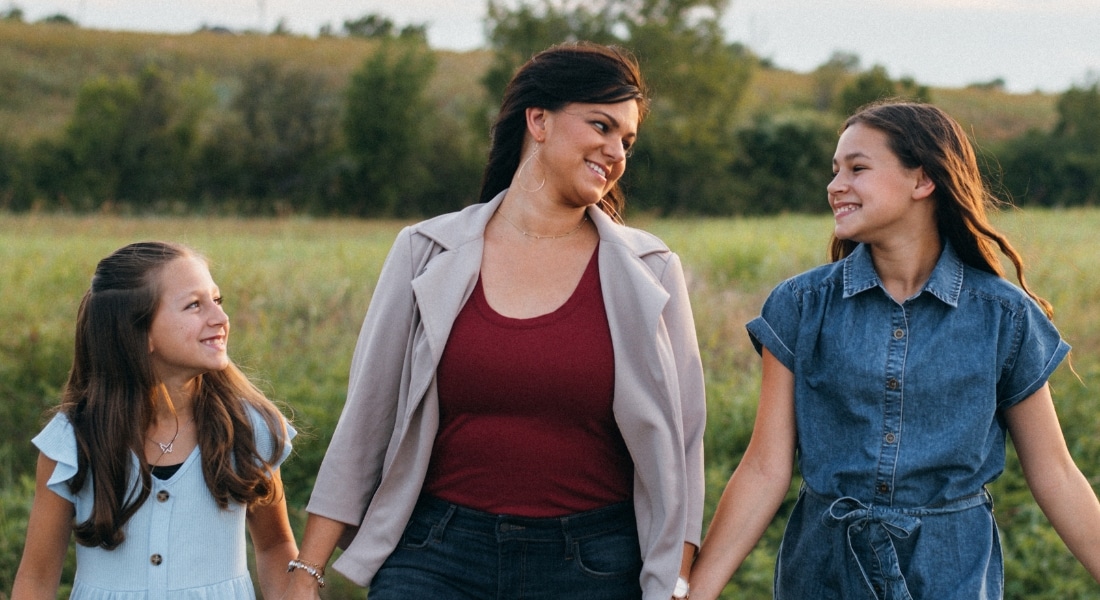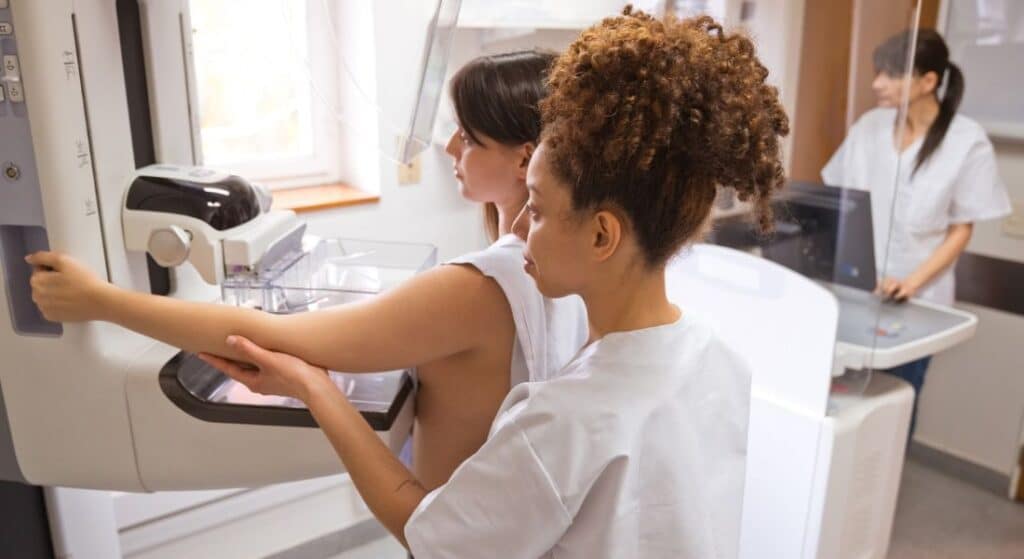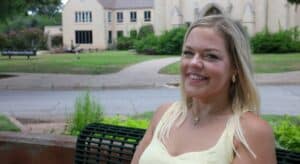It wasn’t a decision that Christina Agee took lightly, but after years of being at high risk for cancer, countless screenings, and numerous biopsies, she chose to part ways with her breasts earlier this year.
The 41-year-old physical therapist would become the first patient at Methodist Charlton Medical Center for Danielle Jacobbe, DO, FACOS, a breast surgical oncologist who recently joined the medical staff at the hospital.
“I knew Dr. Jacobbe and her team were exactly who I needed as I began this journey,” Christina says. “She has years of experience, is incredibly knowledgeable, and is a passionate advocate for her patients.”
Over the course of a year, Dr. Jacobbe performed two biopsies and put Christina on a high-risk screening schedule. Last year, her risks increased dramatically with the discovery of a condition called lobular carcinoma in situ (LCIS).
“With the finding of LCIS, my breast doctor encouraged me to consider all available treatment plans,” Christina says. “That was when I decided a double mastectomy with reconstruction was the best option for me to preserve my health in the way I wanted to.”
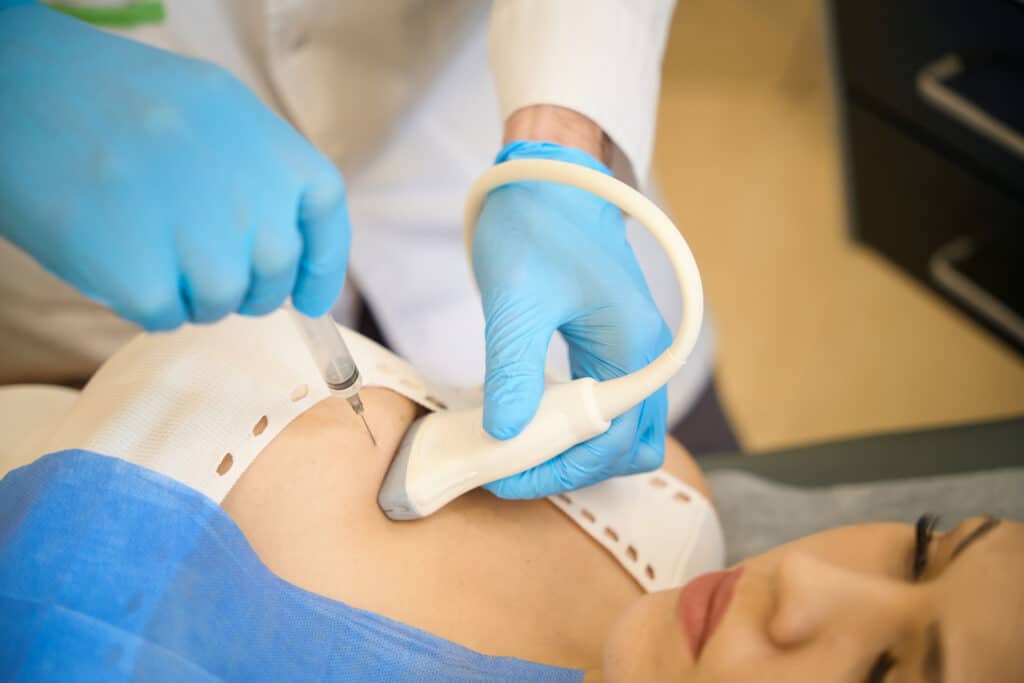
Ultrasound technology and a small incision make the modern breast biopsy a minimally invasive procedure.
CANCER RISKS EARLY ON
Christina’s breast health journey began at age 25 when she found her first lump, which led to a mammogram and biopsy. Thankfully, the lump was benign.
For the next decade, Christina’s breast health remained stable. Then, in her mid-30s, scans revealed some areas of concern. But like so many other women, the COVID-19 pandemic made it difficult to maintain her breast care routine.
After the pandemic subsided, Christina got back to her regular breast screenings.
“I was always aware of the high likelihood that I would face a health challenge with my breasts,” she says, “so I wasn’t exactly surprised when those scans revealed some suspicious spots.”
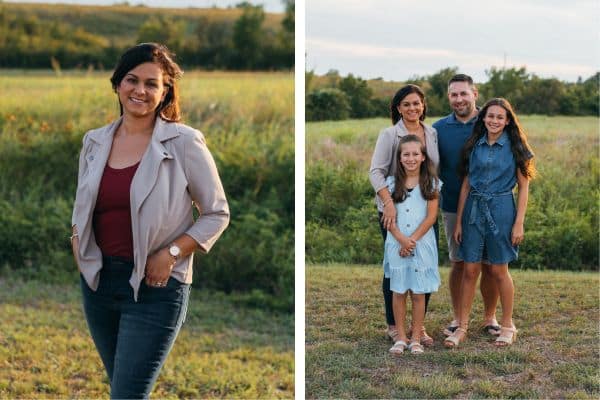
Christina with her husband, Dennis, and daughters, Elizabeth (left) and Abigail
SPECIALTY BREAST CARE
In November 2022, Christina was referred to Dr. Jacobbe and made an appointment right away. That’s when she was placed on a high-risk screening schedule.
Christina would now have yearly mammograms and MRIs six months apart. According to Dr. Jacobbe, this aggressive schedule was key in the discovery of her LCIS, making it so critical for high-risk women like Christina.
LCIS is a lesion that can grow within the milk-producing lobules of the breast. Sometimes found during a biopsy, LCIS raises the risk of developing breast cancer anywhere from 7 to 12 times, according to the American Cancer Society.
“LCIS is not cancer, but it is a risk factor for developing invasive breast cancer in the future,” Dr. Jacobbe says. “This development was the tipping point for Christina to start exploring all her options.”
LEARNING HER OPTIONS
Among those alternatives was to continue the high-risk screening schedule but add in hormone therapy medication that would help reduce her risk of breast cancer.
“Christina had concerns about the possible side effects of the medication,” Dr. Jacobbe says. “We talked through both options at length, and I encouraged her to make the decision that was best for her.”
She could also have a double mastectomy, surgery to remove both breasts. With this option, specialists like Dr. Jacobbe employ what’s known as an “oncoplastic” approach that combines removal of the tissue with reconstructive plastic surgery.
“I chose to have a double mastectomy, which would reduce my risk of breast cancer developing by 99%,” Christina says.
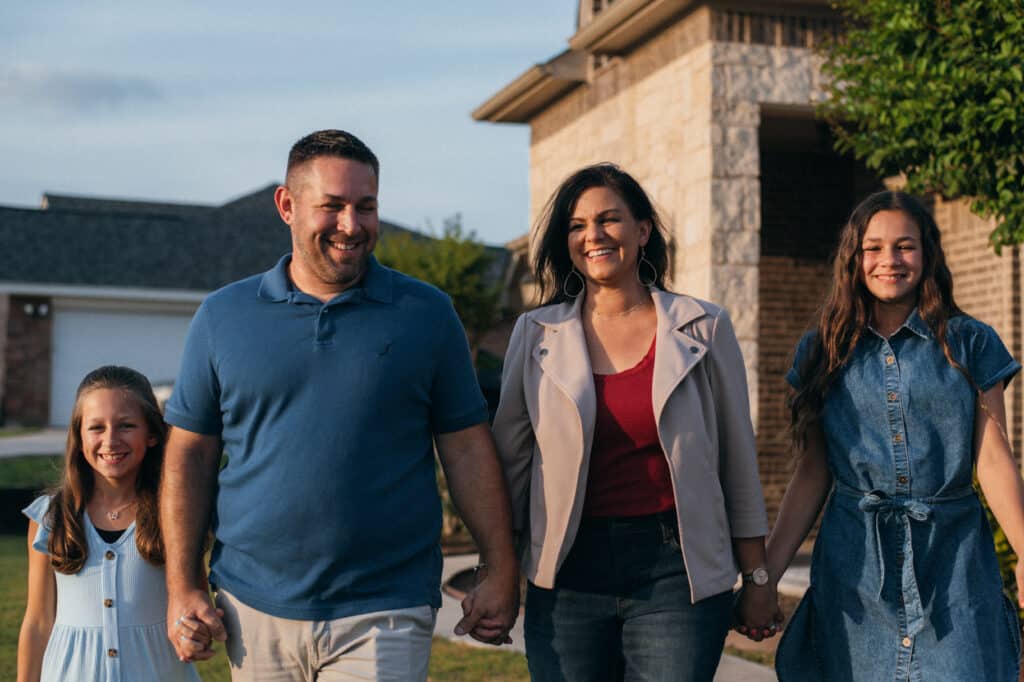
Christina and her family are happy to put their worries about breast cancer behind them.
PEACE OF MIND, AT LAST
Tired of the constant worries about her risk factors, Christina made her decision with confidence and plenty of support from Dr. Jacobbe and her team. That choice was only affirmed shortly afterward.
“Just after my LCIS was found,” Christina says, “I learned that my mother was diagnosed with invasive breast cancer.”
In January 2024, Christina had surgery to remove both breasts, along with a DIEP flap reconstruction, a procedure that moves tissue from the abdomen to restore the shape of the breast.
With her surgery and everything that came before behind her, Christina finally has the peace of mind she wanted for her and her family.
“I am grateful this path was a choice,” she says. “Many women facing breast cancer don’t have the opportunity to choose.”

